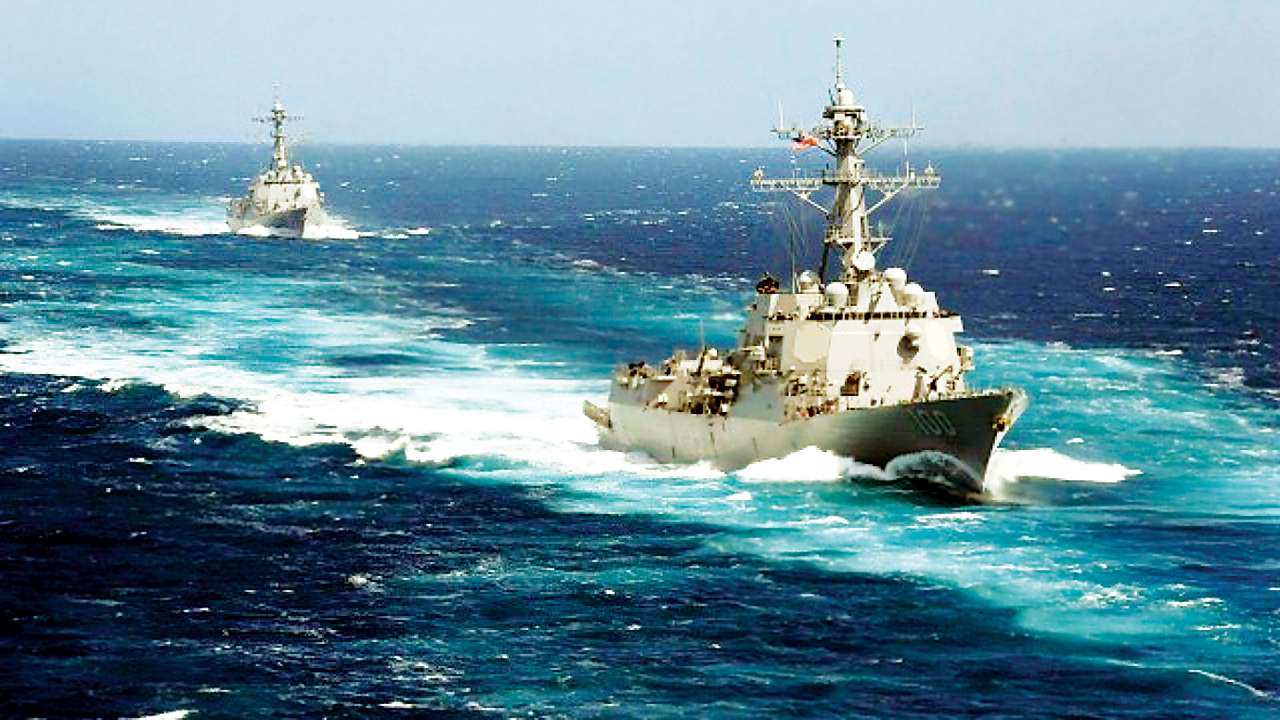
Roughly midway along a line drawn from Yangon in Myanmar to Kunming in China is a small township called Mong Khet. In the Shan state of Myanmar, Mong Khet is close to the eastern border with China.
If Mong Khet is taken as a centre and a circle with radius of 2,500 miles is drawn, a startling fact about our world emerges. More than half the world’s humanity lives within this circle. Known as the Valeriepieris circle, it hosts 21 countries including China, India and the 10 in ASEAN. A little over half of the world’s 7.5 billion population lives within this circle.
In recent years, this region and the countries in the circle have been consistently ruffled by the rise of China which has been increasingly claiming control over the region’s seas and islands. This tightly packed circle of countries is becoming concerned by the impact of China’s ambitions to rule the seas and roost on lands.
The world outside the circle is reacting actively now. The United States and Australia are stepping up their cooperation with India and Japan to create a front to contain the ambitions of China. The Quadrilateral Security Dialogue (or Quad) was resumed after a gap of 10 years at November’s ASEAN meeting in Manila. The focus is to keep the region fr`ee of any hegemonic control by China. This Quad grouping didn’t work when it was first formed in 2007 as there was little to keep the four together beyond generic economic interests. Now the increasing assertion of influence in South China Sea by China has brought this group back together in an effort to maintain stability in the region. The unpredictable aggression by North Korea is another factor that requires the global influencers to play a role in the region.
US President Donald Trump has added another dimension to the region by repeatedly using the term Indo-Pacific rather than Asia Pacific. In his recent tour of Asian countries, he underlined the importance of Indo-Pacific as a region which has long been used by marine specialists to describe the waters between the Indian Ocean and the Pacific Ocean. At the recent Horasis Asia Meeting in Kolkata, a senior industry leader from an ASEAN country told me there was much curiosity about the implication of the use of this term. At the Horasis meeting, attended by policy and business leaders, it was clear that the impact of the return of the Quad and rise of “Indo-Pacific” is being assessed with caution among security experts, diplomats and industrialists.
Another important dynamic is gaining momentum within the Valeriepieris circle. Building on past efforts, Prime Minister Narendra Modi is deepening India’s linkages with ASEAN. While marine-based economic engagement is being enhanced, India is building the right optics around it. Modi has invited the 10 heads of state of ASEAN to be guests for Republic Day Parade.
Even as India and ASEAN observe 25 years of dialogue partnership and five years of strategic partnership, the barriers within the grouping can undermine its relationship with global powers. India will find it tough to move ahead comprehensively since serious tariff and non-tariff barriers have prevented ASEAN from being a common market.
Despite the differences, the countries within the Valeripieris circle have much in common. Most were colonised and were economically denuded. The rise of Asian tigers along with China and India has shifted the economic centre of gravity to this region. The figures from the World Bank depict how new engines are powering global growth. In the next three years (2017-19), the $75 trillion global economy will grow by $6.5 trillion. Much of this growth will come from countries within the circle. China will contribute 35 per cent to the growth. India (8.6 per cent), Indonesia (2.5 per cent), South Korea (2 per cent) and Japan (1.5 per cent ) will be the other main contributors from within the circle. The US with a contribution of 17.9 per cent is almost half of China. And the European Union with 7.9 per cent contribution is a shade less than India.
These countries within the circle are also leapfrogging to embrace new technologies, offering them opportunities at par with the developed world. A new form of collaboration will be essential if this half of humanity has to harness its economic momentum for stability, security and society.
India and China are taking important positions since they are deeply entrenched in the circle. The influence of global powers is converting the land and seas into a tense theatre of geo-political game.
The Valeriepieris circle was created in 2013 by a keen watcher of geo-politics. And since then it has been refined by various academics as the region becomes increasingly important to the world. The town of Mong Khet now finds itself at the centre of a new era of global shift.
The writer is an economic analyst and author of Kranti Nation: India and The Fourth Industrial Revolution